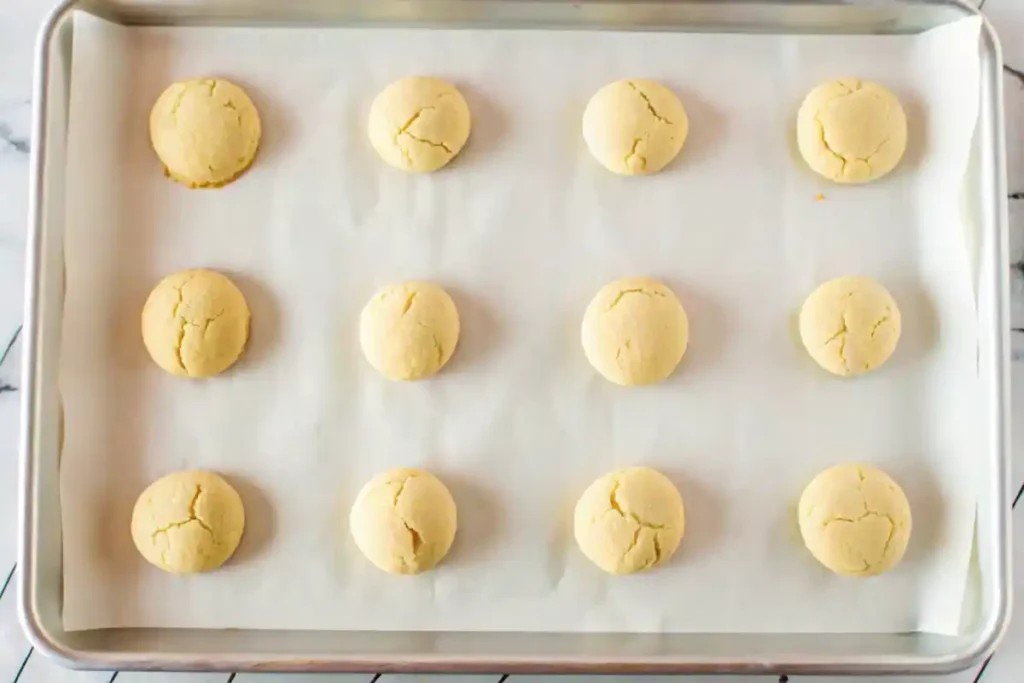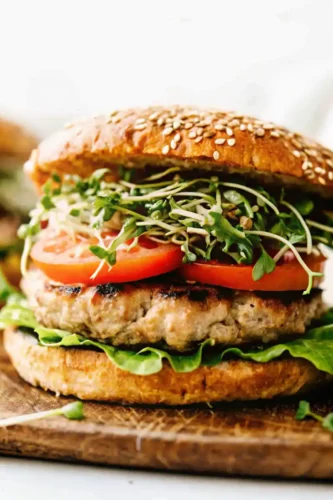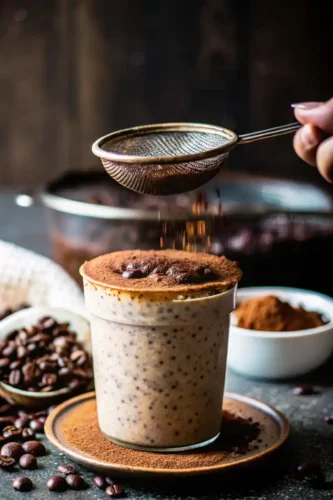Anise cookies are the perfect way to bring a little magic into your baking routine! With their distinctive licorice-like flavor and sweet, comforting aroma, they’ve been winning hearts for generations. Whether you’re enjoying them with a cup of tea or adding them to your holiday dessert spread, these cookies are sure to delight.
In this guide, we’ll take you through everything you need to know about anise cookies— the best baking tips, and two must-try recipes that will make your kitchen smell like pure happiness. Don’t worry if you’re new to baking—these recipes are simple, fun, and absolutely delicious. So, let’s roll up our sleeves and whip up a batch of these irresistible treats together!
JUMP TO
What Are anise cookies?
Anise cookies are sweet confections typically flavored with either anise seed or anise extract. They present a crisp edge and a soft interior. Some families prefer them crunchy, while others enjoy a cakey texture. Either way, the flavor stands out due to the prominent licorice-like taste that the anise plant provides.
The Flavor
The taste of anise is reminiscent of licorice, fennel, or even tarragon. However, it offers a milder experience than pure licorice candy. Consequently, these cookies strike a perfect balance between sweet and subtly herbal. Indeed, this unusual yet comforting flavor sets them apart from ordinary sugar cookies. Furthermore, the aroma fills the kitchen with a warm, enticing scent. Undoubtedly, that’s part of their charm during festive seasons.
Health and Nutrition
Anise itself contains beneficial compounds like anethole. This compound has been studied for possible digestive support. Nonetheless, cookies remain a sweet treat. Thus, moderation is always key. Indeed, the sugar and butter in these recipes contribute to calorie intake, so enjoy them responsibly.
Potential Benefits
- Digestive Ease: Anise has historically been used to aid digestion.
- Antioxidants: Anise seeds possess some antioxidants that can benefit overall health.
- Refreshing Aroma: Because of their scent, these cookies can also lift your mood.
However, relying on cookies for health benefits alone is unwise. Conversely, anise-flavored teas or savory dishes might provide more robust perks. Nonetheless, a few cookies with real anise seeds may still offer a gentle soothing effect for some individuals.
Considerations
- Allergies: Some individuals are allergic to certain spices. Be sure to verify that anise is safe for you if you have known spice allergies.
- Dietary Restrictions: Butter, eggs, or milk might not suit everyone. You can find dairy-free or vegan recipes that use substitutes like coconut oil or flaxseed “eggs.”
- Sugar Content: Because these are cookies, they do contain sugar. If you need a low-sugar version, consider adjusting the recipe or using sugar substitutes.
Altogether, anise cookies can fit into a balanced lifestyle when enjoyed sparingly. Indeed, they are perfect for special occasions, especially if you savor them mindfully.
Key Ingredients for anise cookies
High-quality ingredients play a major role in producing delicious anise cookies. Specifically, fresh anise seed, anise extract, or star anise can make a significant difference in flavor. Generally, these ingredients define the signature taste. Because the cookie itself is relatively simple, the anise stands out even more.
Different Forms of Anise
You can flavor anise cookies in a few ways. Primarily, home bakers rely on:
- Anise Seed: These tiny seeds come from the Pimpinella anisum plant. They impart a straightforward, fresh taste.
- Anise Extract: This form provides a concentrated essence of the spice. It is ideal if you want a more robust flavor in the dough.
- Star Anise: Though technically from a different plant (Illicium verum), star anise also offers a licorice note. It can be ground or used to create extracts.
Conversely, some bakers combine both seeds and extract for an intense flavor burst. Indeed, your choice depends on personal preference or recipe guidelines.
Pantry Staples
Along with anise, certain core ingredients form the base of most anise cookies recipes:
- All-Purpose Flour: Provides structure and ensures the cookies can hold their shape.
- Sugar: Usually granulated sugar sweetens the cookie dough. Powdered sugar may appear in some variations.
- Butter or Oil: Butter delivers a richer, creamier taste. However, some recipes use oil for a lighter texture.
- Eggs: Binding agents that also contribute to a moist, tender crumb.
- Leavening Agents: Baking powder or baking soda helps the cookies rise.
- Additional Flavorings: Some recipes add vanilla extract or citrus zest to complement the anise.
Baking Tips for anise cookies
Baking these cookies might seem easy, but a few tips can help you achieve the perfect result. Initially, you want to balance sweetness with the licorice-like undertones. Particularly, the ratio of anise extract or seeds to sugar is key.

Achieving Perfect Texture
The texture depends on dough consistency and baking time. If you prefer soft cookies, you might incorporate a bit more butter or shortening. Equally important, slightly reducing the baking time helps them stay moist. If you desire a crisp version, bake them longer or chill the dough before forming cookies. Chiefly, it’s wise to do a test batch. Place two or three cookies in the oven first. That way, you can adjust the time if needed.
Enhancing Flavor
For an even stronger essence, consider lightly toasting whole anise seeds in a dry pan. Eventually, they release more oil and aroma. Afterward, grind them coarsely before adding them to the dough. Additionally, combining anise with complementary flavors—like lemon zest—can highlight its sweetness. Meanwhile, a small pinch of salt rounds out the overall taste.
Proper Cooling and Storing
After baking, leave your anise cookies on a wire rack. This step helps them maintain their structure and prevents them from getting soggy. Subsequently, store them in an airtight container. Because anise flavor tends to intensify over time, these cookies often taste even better the next day. Nonetheless, watch out for excess humidity that might affect crispness.
Two Delicious Recipes
Nothing beats the smell of fresh anise cookies wafting through your kitchen. In this section, you will find two distinct recipes that showcase the versatility of this classic treat. One is a straightforward, classic recipe, while the other adds an Italian-inspired twist. Both are easy to follow and require pantry-friendly ingredients. Accordingly, you can choose the version that fits your taste or try both for variety.
Classic anise cookies Recipe
This recipe yields cookies that are moderately sweet, with a tender crumb and a mild licorice note. The dough is simple. Thus, it’s ideal for beginners who want to experiment with anise flavor.
Ingredients:
- 2 ½ cups all-purpose flour
- 1 teaspoon baking powder
- ¼ teaspoon salt
- ¾ cup granulated sugar
- ½ cup unsalted butter, softened
- 2 large eggs
- 1 teaspoon anise extract
- 1 teaspoon vanilla extract (optional)
- 1 tablespoon milk (if dough seems too dry)
Instructions:
- Preheat your oven to 350°F. Line a baking sheet with parchment paper.
- In a medium bowl, whisk together the flour, baking powder, and salt.
- In a separate large bowl, cream butter and sugar until light and fluffy.
- Beat in the eggs, one at a time. Add the anise extract (and vanilla if you like).
- Gradually mix in the flour mixture. If the dough feels dry, add milk.
- Roll dough into small balls, about one tablespoon each. Place them on the parchment-lined sheet.
- Bake for 10–12 minutes, or until the edges are lightly golden.
- Let the cookies cool on a wire rack. Store them in an airtight container for maximum freshness.
Basically, these classic cookies taste best when they are slightly warm. Moreover, if you want an extra sweet element, drizzle a light sugar icing over the top. Particularly, this approach works well if you love a little sugary crunch.
Italian Twist on anise cookies
This version incorporates hints of citrus and a powdered sugar glaze. Consequently, they have a bright, festive finish that is common in Italian-American households. They are often prepared during holidays, such as Christmas or Easter.
Ingredients:
- 3 cups all-purpose flour
- 1 tablespoon baking powder
- ½ teaspoon salt
- ½ cup granulated sugar
- ½ cup unsalted butter, softened
- 3 large eggs
- 1 teaspoon anise extract
- Zest of 1 lemon (optional but recommended)
- 2 tablespoons milk
- Glaze: 1 cup powdered sugar + 2 tablespoons milk + a few drops of anise extract
Instructions:
- Preheat oven to 375°F. Line two baking sheets with parchment paper.
- Sift flour, baking powder, and salt into a medium bowl.
- In a large bowl, cream butter and sugar until fluffy.
- Add eggs one at a time, mixing well. Stir in anise extract and lemon zest.
- Add the flour mixture, alternating with the milk. Mix until a soft dough forms.
- Shape dough into small balls. Place them an inch apart on the baking sheets.
- Bake for 12–15 minutes, or until slightly golden on the bottom.
- Prepare the glaze by whisking powdered sugar, milk, and a few drops of anise extract. Drizzle glaze over warm cookies.
- Let them cool and allow the glaze to set. Store in a sealed container.
Because these cookies come with a glaze, the y often look lovely on holiday dessert trays. Indeed, the subtle lemon zest creates a tangy contrast that boosts the overall flavor. Finally, for extra flair, some bakers top them with colorful sprinkles.

Serving Suggestions
While anise cookies stand wonderfully on their own, they can also be paired with other foods and beverages. Because of their mild sweetness, they often blend well with warm drinks or light toppings.
Pairings with Beverages
- Coffee: Dunk your cookies in a hot cup of coffee for a blissful morning treat.
- Tea: Their licorice-like taste pairs nicely with black tea or herbal blends.
- Milk: If you crave comfort, enjoy them with a cold glass of milk.
- Hot Chocolate: For extra indulgence, dip them in a creamy mug of hot cocoa.
Undoubtedly, these cookies enhance cozy moments, whether you are hosting friends or enjoying a quiet afternoon snack.
Toppings and Variations
- Sugar Icing: Drizzle a simple icing made from powdered sugar and milk.
- Sprinkles: Add color and fun, especially for holiday gatherings.
- Chocolate Drizzle: Melt semisweet or dark chocolate. Then, use a fork to flick ribbons of chocolate over the cookies.
- Citrus Zest: Lemon or orange zest can add an extra zing.
If you’re curious about how these extras might affect the calorie count of your cookies, take a look at Crumbl Cookie Calories for insights on popular cookie varieties. Because these toppings can also be combined, the options are endless. You can experiment to find the right flavor combination for your taste buds. Altogether, these little extras make anise cookies shine on any dessert tray.
How to Store anise cookies Properly
Storing your freshly baked anise cookies is essential for maintaining both taste and texture. Chiefly, place them in an airtight container lined with parchment or wax paper. Layer the cookies with more parchment if needed. Indeed, this method minimizes contact with moisture. Consequently, they will stay crisp if that’s your preference, or remain soft if the recipe calls for a cake-like texture. Furthermore, store them at room temperature for up to a week. If you need them longer, freeze them in airtight freezer bags. Initially, let them cool completely, then freeze for up to three months.
Conclusion
Anise cookies are a sweet and aromatic treat that bring warmth and nostalgia to any occasion. Their unique licorice-like flavor and simple preparation make them perfect for both festive gatherings and everyday indulgence. Whether paired with coffee, tea, or enjoyed on their own, these cookies are a delightful addition to your dessert lineup.
If you’re looking for tips on making your baking even better, explore our guide on Substitutes for Heavy Cream to adjust recipes to your preferences. For a fruity variation, you might also enjoy baking Lemon Blueberry Cookies, another delicious option to brighten your dessert table.
Give anise cookies a try and discover why they’ve been cherished for generations! Enjoy the process, and savor every aromatic bite.
Frequently Asked Questions
What are anise cookies made of?
They are typically made with flour, sugar, eggs, and butter or oil. Additionally, anise extract or anise seeds provide their signature flavor. Baking powder helps them rise. Some variations include a simple glaze or extra flavorings like vanilla or lemon zest.
What is the flavor of anise?
Anise has a licorice-like flavor with sweet undertones. It is milder than black licorice candy, yet it still offers a distinct taste. People often describe it as aromatic, warm, and slightly sweet. Consequently, many cultures use it in both sweet and savory dishes.
How to use anise in baking?
You can add anise to baked goods by using ground seeds, whole seeds, or extracts. Initially, figure out how strong you want the flavor. For subtler results, rely on whole seeds. For stronger anise intensity, choose a few drops of anise extract or powdered star anise. Another strategy is to toast whole seeds first to release extra aroma.
Does anise increase estrogen?
There is some anecdotal discussion about anise affecting hormone levels because it contains phytoestrogens. Nonetheless, mainstream scientific evidence is limited, and consuming normal amounts of anise in foods such as cookies is unlikely to cause a hormonal shift. If you have concerns, it is wise to consult a healthcare professional for personalized advice.






